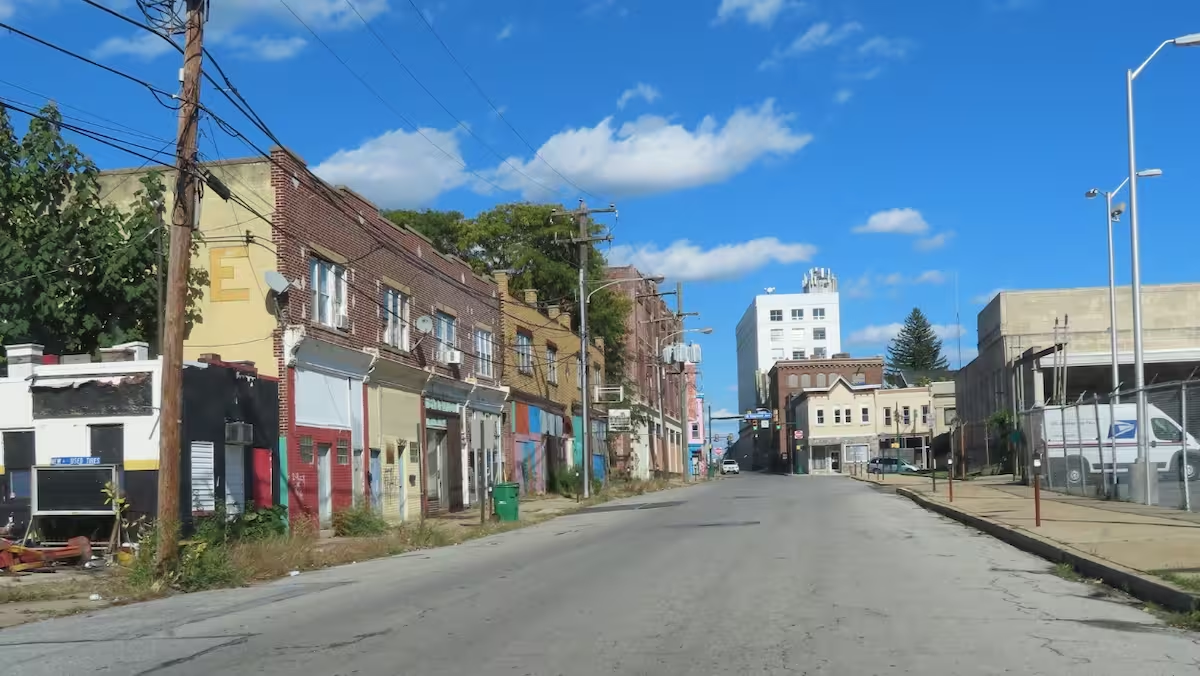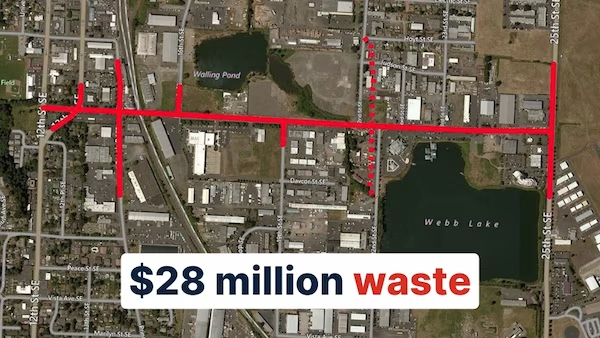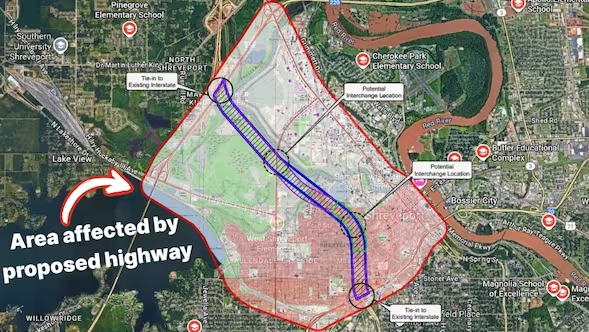Editor's Note: The challenges our cities face are growing, but so is the strength of this movement. Every story we share, every idea we spread, and every tool we build exists because people like you are committed to showing up. Your membership isn’t passive—it’s the momentum that makes change possible.
Chester, Pennsylvania, is one of the oldest cities in the state — a once-thriving industrial hub along the Delaware River with a proud working-class heritage. It has rail access, waterfront views, and proximity to major urban centers like Philadelphia and Wilmington. It should be thriving.
But decades of decline left it hollowed out: abandoned buildings, high unemployment, and deep economic insecurity. Chester was declared financially distressed in 1995 under Pennsylvania's Act 47, placing it under state oversight. Yet even with decades of supervision and millions in aid, the city's fiscal crisis persisted.
In the early 2000s, a new vision emerged. State leaders proposed revitalizing Chester by turning it into a regional destination. The plan revolved around a few key pieces: a soccer stadium on the waterfront, some speculative housing and office development, and, crucially, a pair of new highway ramps to connect the area more directly to I-95 and the Commodore Barry Bridge.
This significant transportation investment, officials claimed, would “enhance access” and “unlock economic development.” If you could just make it easier for drivers to get to Chester’s shoreline, the thinking went, prosperity would follow.
In 2012, the Pennsylvania Department of Transportation (PennDOT) completed construction of the two new ramps for $77.1 million. The goal was simple: allow motorists to exit I-95 a half mile sooner, delivering them directly to Route 291 and the stadium area.
Chester wasn't chosen for this investment because of its location or because ramps were what the community needed. The community didn't even ask for them. Chester was chosen because it made a compelling story — a poor, predominantly Black city with visible need — which elevated the competitiveness of the funding application. Never mind that the project didn't match what residents needed. It aligned well with federal grant narratives.
PennDOT received awards from engineering associations for the project. State officials from both political parties cut the ribbon and celebrated the investment as a turning point. As PennDOT District Executive Lester C. Toaso explained at the time, “These new ramps are going to enhance access and travel within the City of Chester and complement the city’s economic redevelopment and revitalization efforts along the waterfront.”
Over a dozen years have now passed. For the residents of Chester, little changed.
There was no boom. No rush of development. No resurgence of jobs, housing, or basic services. A $4 million supermarket promised as part of the plan never materialized. Nor did the “village” of housing and offices envisioned in planning documents. What did get built were training fields, a riverwalk, and facilities that mostly served the soccer team — not the locals who lived just blocks away.
Despite the soaring rhetoric used to justify the federal investment and the many promises of the prosperity that would follow, Chester continued to struggle. In 2020, the city entered receivership. In 2022, it declared bankruptcy.
How Federal Dollars Shape the Wrong Projects — and the Wrong Story
The Chester ramps are not an isolated mistake. They are the predictable outcome of a transportation funding system that rewards appearance over impact.
Federal programs pay for big construction projects. They offer generous matching funds — in this case, 80% federal, 20% state — but only for the kinds of infrastructure that conform to their narrow definitions of access and mobility. Cities are pushed to design projects not to meet their own needs, but to qualify for federal support.
To justify those projects, communities are often portrayed in marketing terms. In Chester’s case, the story became one of transformation: distressed city, untapped potential, catalytic infrastructure. Chester made a compelling narrative that aligned well with federal grantmaking goals. It didn't matter that the ramps weren’t what the city asked for, or that they wouldn’t address the needs of people living there. They made for a strong application.
This wasn’t just a bad investment for Chester. It was a bad investment for Pennsylvania. At the time the ramps were built, PennDOT led the country in structurally deficient bridges — over 5,900 in all — carrying more than 23 million vehicles every day. That figure has improved slightly in the years since (they are now the second-worst state), but the backlog remains massive. In a state already unable to maintain what it had, this new, redundant interchange only added to future obligations without solving an urgent problem.
In a city where many people can’t afford to drive, leaders spent $77 million to shorten a highway trip by half a mile — an amount equivalent to over $9,000 in 2012 for every family in Chester.
The real tragedy is not just that the ramps didn’t help. It’s that no one is particularly bothered that they didn’t.
The project received awards — not for improving lives, but for being built. The engineering and contracting societies that gave PennDOT their accolades were, in effect, rewarding the agency for directing public money into their industry. There is no accountability built into this system. The metrics of success are about dollars spent and concrete poured, not lives improved or communities strengthened. Once the money flows, the professional class — engineers, contractors, consultants — considers its job done.
Politicians moved on. Contracts were fulfilled. The city filed for bankruptcy. The ramps remain.
Residents, meanwhile, remain skeptical. One told a reporter:
“Something is always ‘coming to Chester.’ Then they talked about ‘oh, I-95 is coming through… that’s gonna bring all this opportunity.’ People drove right f—— by us.”
Another laughed when asked about the soccer team:
“They haven’t given the city s——, as far as I know.”
State Representative Thaddeus Kirkland, a longtime Chester leader who served in the legislature and later as Chester's mayor, gave the project a full-throated endorsement at the time. “We need these types of things to build economic development,” he said. “If William Penn could see us now, he’d have a nice place to park his boat, a nice stadium to go see a soccer game in, and then he could take a few of his gold coins and go down to Harrah’s.” The comment, certainly meant to be lighthearted, underscored just how disconnected the rhetoric was from the everyday reality of Chester residents.
There’s no mechanism in the federal transportation system to evaluate whether the Chester ramps actually delivered on their promises. There’s no financial or professional consequence when they don’t. There’s just another plan, another grant, another project — and another cycle of disappointment.
When Funding Dictates the Problem, Communities Lose
What happened in Chester isn’t just a mistake. It’s a symptom of a funding system designed to prioritize construction volume, not community benefit.
The Chester ramps were built to connect drivers to a stadium. What Chester residents needed was a grocery store, small business investment, safe neighborhoods, and honest engagement. None of those were on offer through the federal-aid program.
When the federal government controls the purse strings and transportation holds the lion's share of infrastructure dollars, every struggle starts to look like a transportation project. Legacy funding programs — designed for a different era — continue to dictate what qualifies for investment. The result is that communities are forced to conform their needs to outdated funding silos rather than being empowered to solve problems on their own terms.
Hunger becomes a problem of traffic access. Disinvestment becomes a problem of connectivity. And solutions that have nothing to do with streets or ramps get recast as infrastructure so they can compete for funding. In Chester, that dynamic produced a pair of ramps that served nobody’s true needs, but fit neatly into a transportation budget.
If cities like Chester are going to recover, they don’t need another highway ramp. They need federal and state systems that:
- Prioritize maintenance over expansion.
- Fund small, human-scale projects that residents actually want.
- Stop using poor cities as props for economic development theater.
- Tie dollars to outcomes, not just engineering inputs.
The ramps in Chester were never about helping Chester. They were about helping someone else feel like they had.



.webp)

